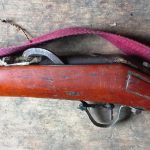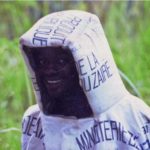Hadzabe people use four basic arrowhead types, which are further divided into different styles. All of these types and styles serve specific hunting applications.
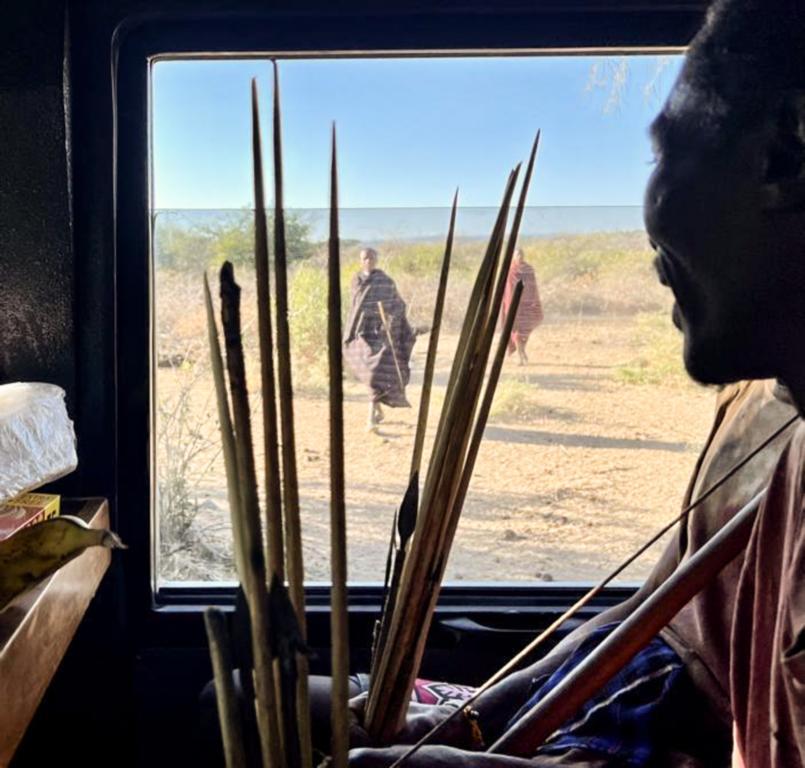
1st basic type of Hadzabe arrowheads: Wooden arrow tips
These types of arrowheads are called hik’o in the Hadza language. Four different shape styles distinguish themselves by their mechanical mechanisms, increasing the resistance to removing the arrowhead from the wound.
Smoothly tapered wooden tip
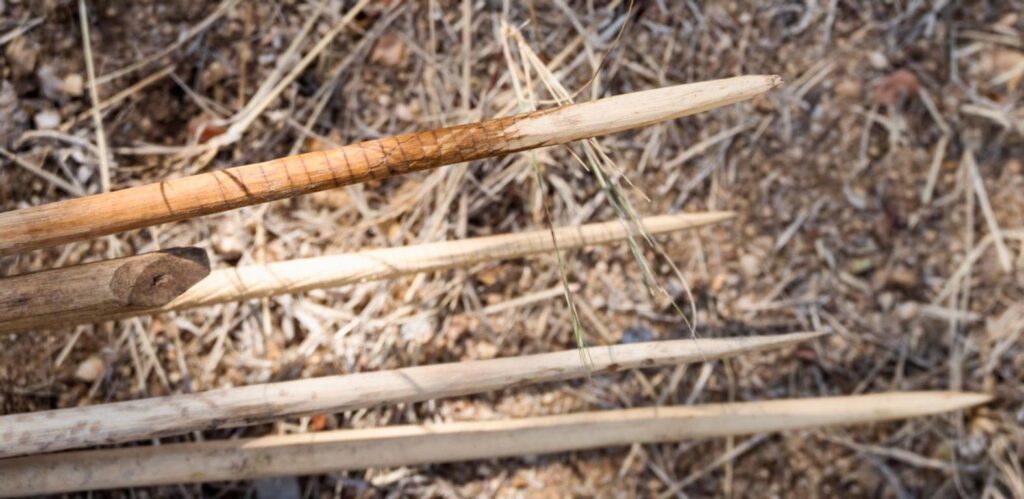
An arrow with a smoothly tapered wooden point is the standard tool for practice and for shooting small game animals during stalking. In this definition, small game are all birds up to the size of hornbills and small mammals with thin hides. That is also why most of the arrows Hadza hunters hold in hand have a simple wooden tip. These arrows are often used, and these target animals can be shot repeatedly.
Wooden tip with spiral cuts
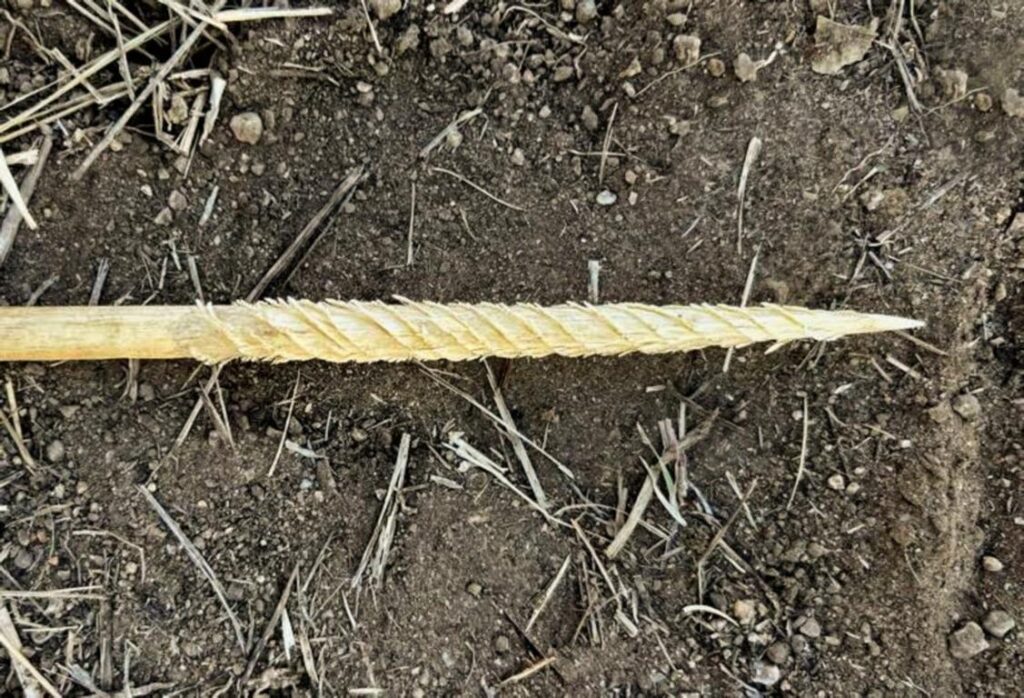
Adding spiral cuts to the tapered point, which act like mini-barbs, will increase the wooden tip’s resistance to being pulled from the shot animal. For example, a shot onto a bushbaby (Galago sp.) would be such an application.
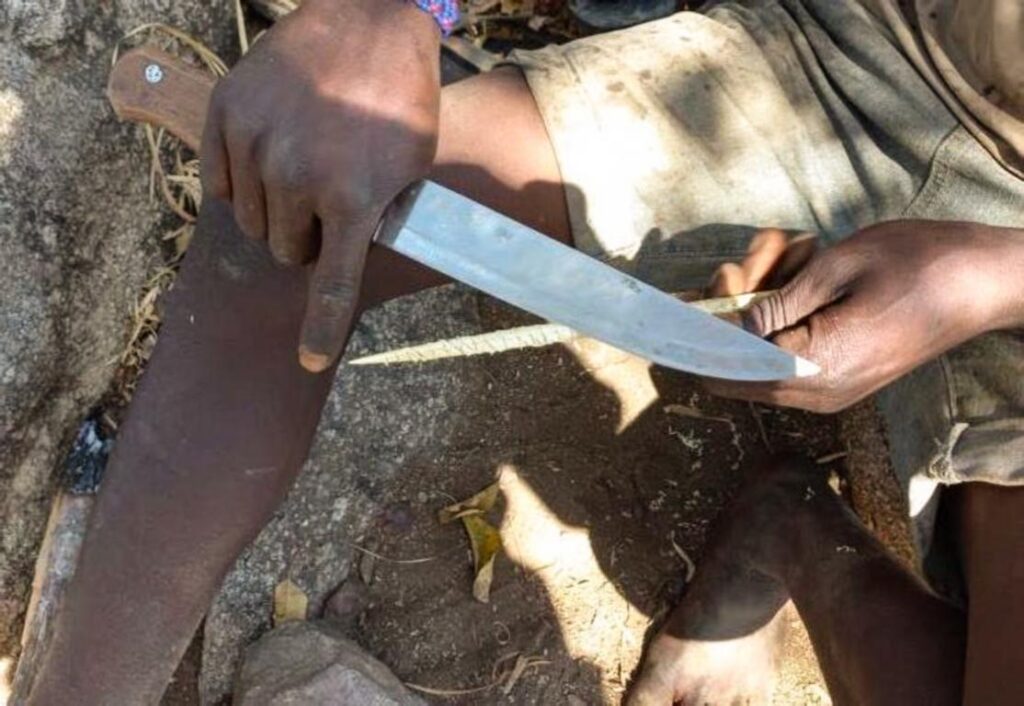
This comes in handy when restricting the movement of the shot animal by holding it down with the arrow’s weight is necessary, as is the case with larger terrestrial birds up to the size of spurfowls and francolins.
Wooden tip with multiple barbs
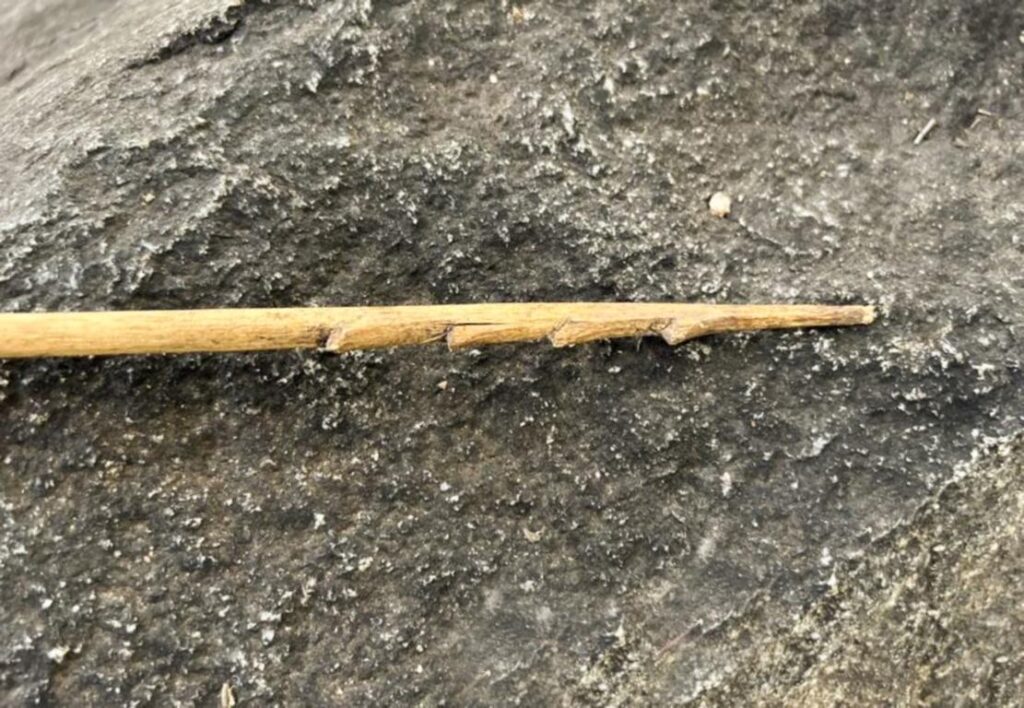
Increasing the size of the barbs will further increase the arrow’s holding power in the body, as would be necessary on Guinefowls (Numididae sp.), monkeys, or baboons.
Wooden tip with a single barb
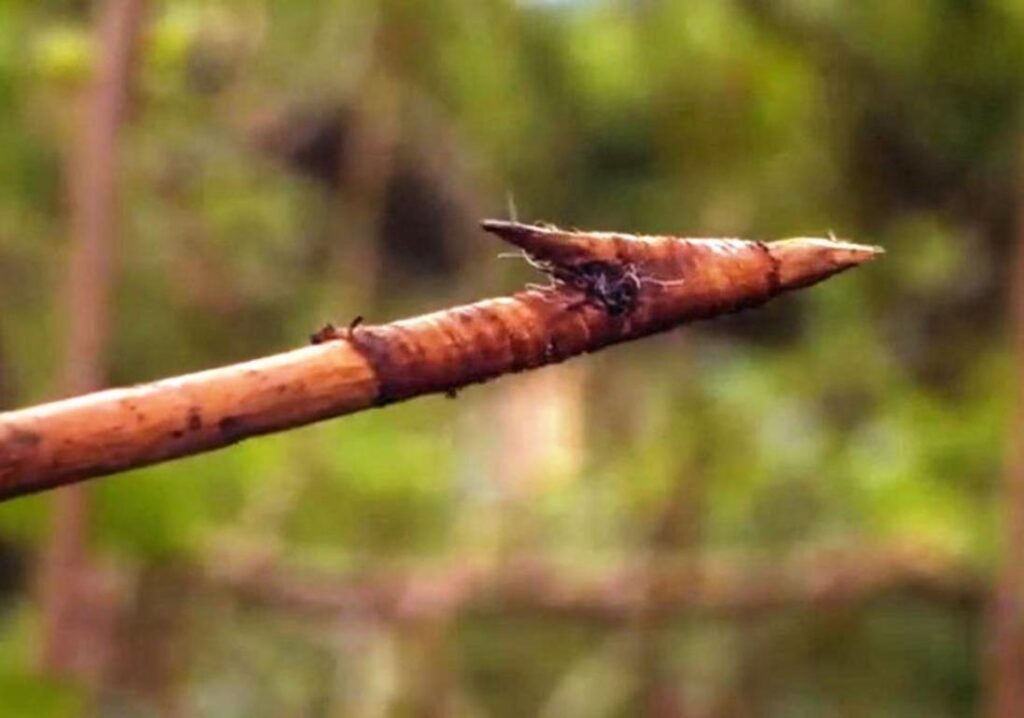
A further variation of the wooden arrow tips is hik’o lo’one, where one separate barb is bound with fine giraffe ligament onto the wooden tip. This arrow type is mainly used for animals with thin hides hiding in holes, cracks, or under boulders. Like Rock Hyraxes (Procavia capensis), better known as ‘Rock Dassies’. When shot, the arrow will be locked securely in the animal, and it can be pulled out of its hiding place by the long handle of the arrow.
2nd type of Hadzabe arrowheads: Lance-shaped iron arrowhead

This arrowhead resembles a lance tip and is called kasama in the Hadza language. Its main use is for Dik-Dik (Madoqua kirkii) antelopes. A wooden arrow tip would not be strong enough to penetrate their fur and skin, so a metal broadhead is required to penetrate and open blood vessels. These animals are killed by shock and blood loss. These arrowheads are also used when a wounded larger animal must be dispatched or dangerous animals must be warded off. The Datoga people use a similar type of broadhead.
3rd type of Hadzabe arrowheads: Barbed iron arrowhead
This fierce-looking metal broadhead comes in two shapes. One is the so-called male head. It is single-barbed and called //ana bei the Hadzabe. The other shape is the so-called female head with two barbs, called //anako in the Hadza language. Both shapes will always be used together with arrow poison. The barbs act as hooks in the animal’s body, and the wooden arrow shaft will be ripped out when the animal runs off.
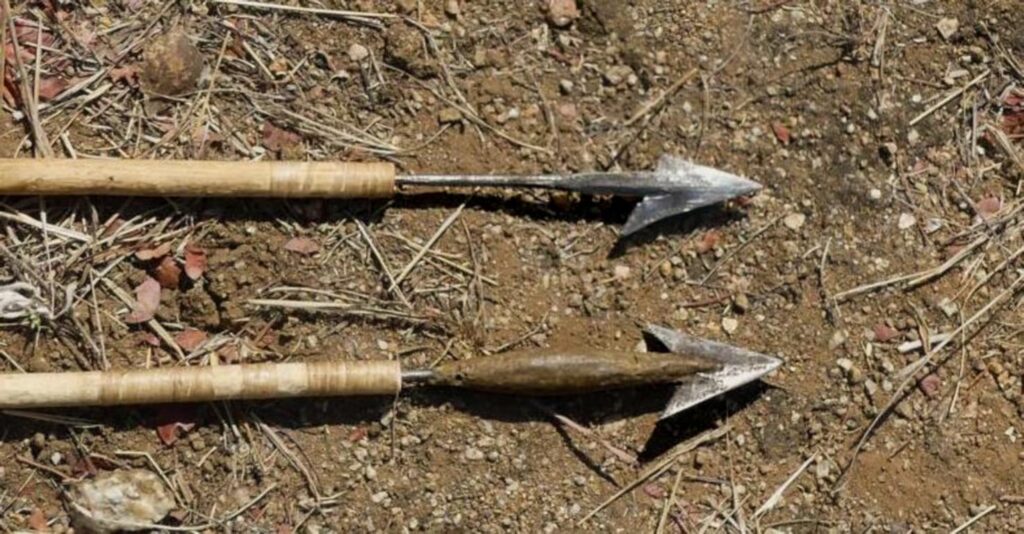
Male metal broadheads with one barb are preferably used to shoot Zebras. These animals have a very tough hide, and their ribs are close to each other, so only a small gap is in between them. Therefore, the kinetic energy must be focused on a smaller area for proper penetration. However, one barb must keep the arrowhead within the animal’s body so the poison has time to act.
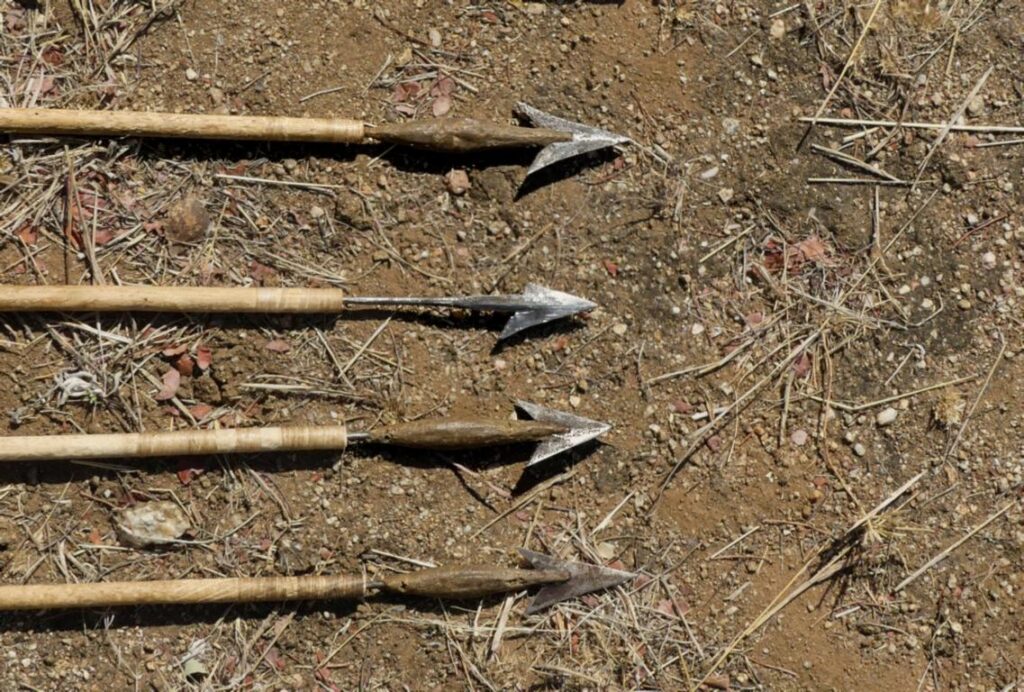
The female metal broadheads with two barbs are reserved for all other mid-sized and larger game animals. These animals must be killed by arrow poison. In the two pictures above, the male head lacks the poison around its neck, which makes it unfit for hunting at this stage.
4th type of Hadzabe arrowhead: Blunt-tipped arrowhead
Blunt-tipped arrowheads are primarily used for shooting songbirds (Passerines). Remotely living Hadza hunters carve the blunt tips directly on their wooden arrows. However, the diameter of these blunt tips is restricted, as the wood for the arrows has small diameters. Too much material must be removed from the arrow shaft for carving larger blunt heads.
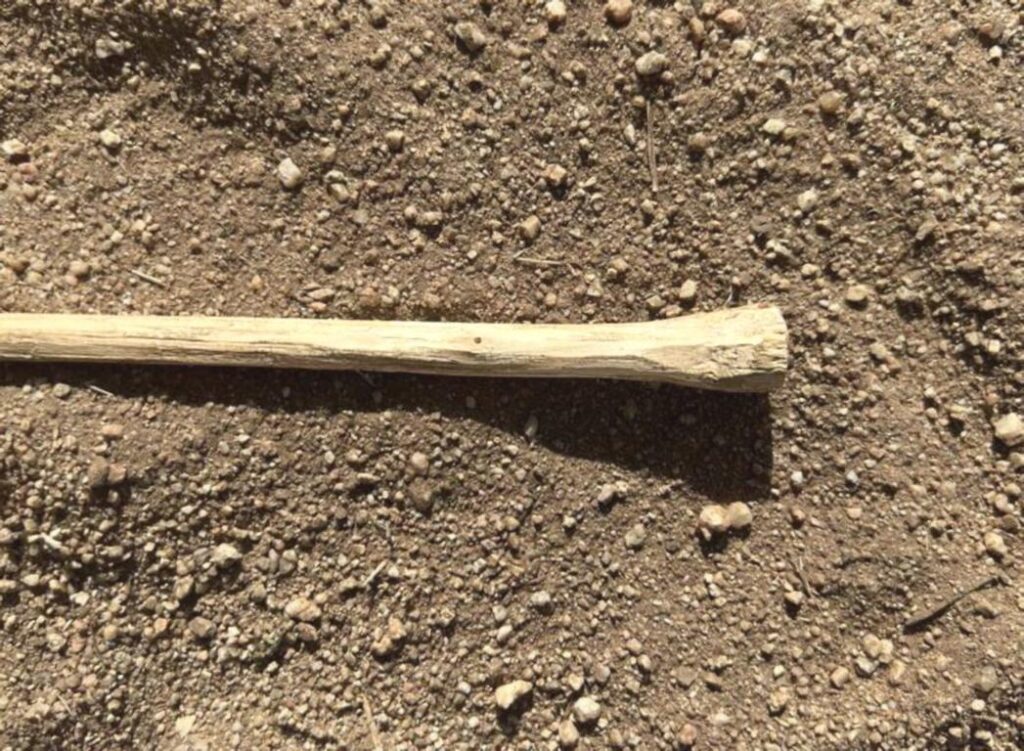
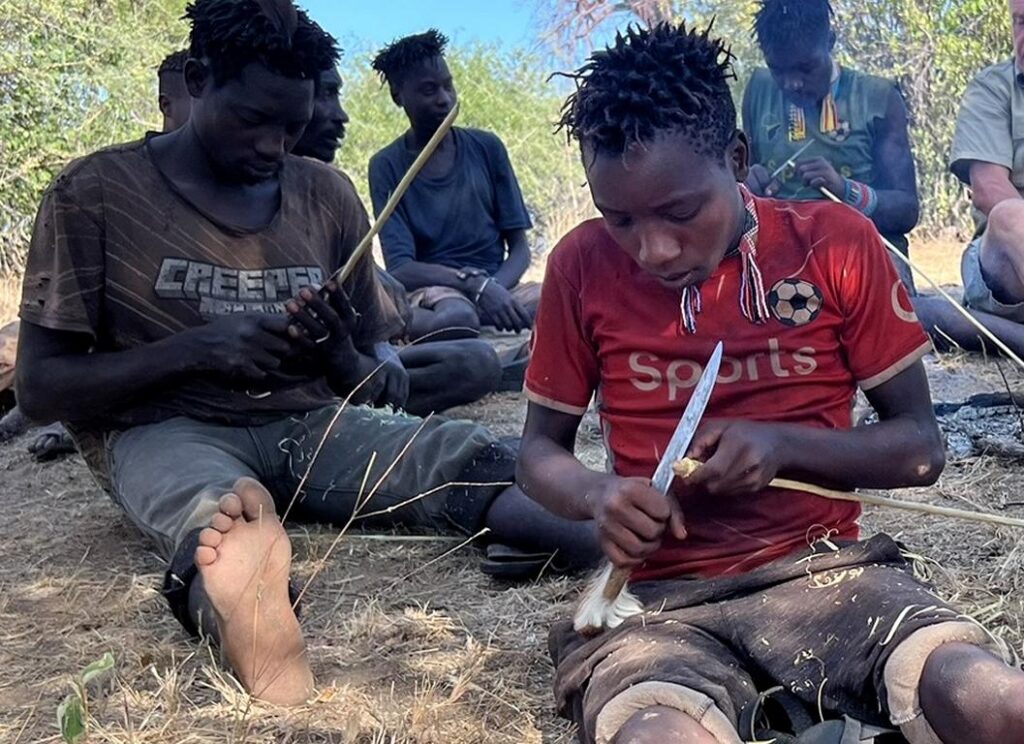
That is why Hadzabe people also use animal glands and bones to create a star-shaped, lightweight, and sturdy contraption on top of the arrow shafts.
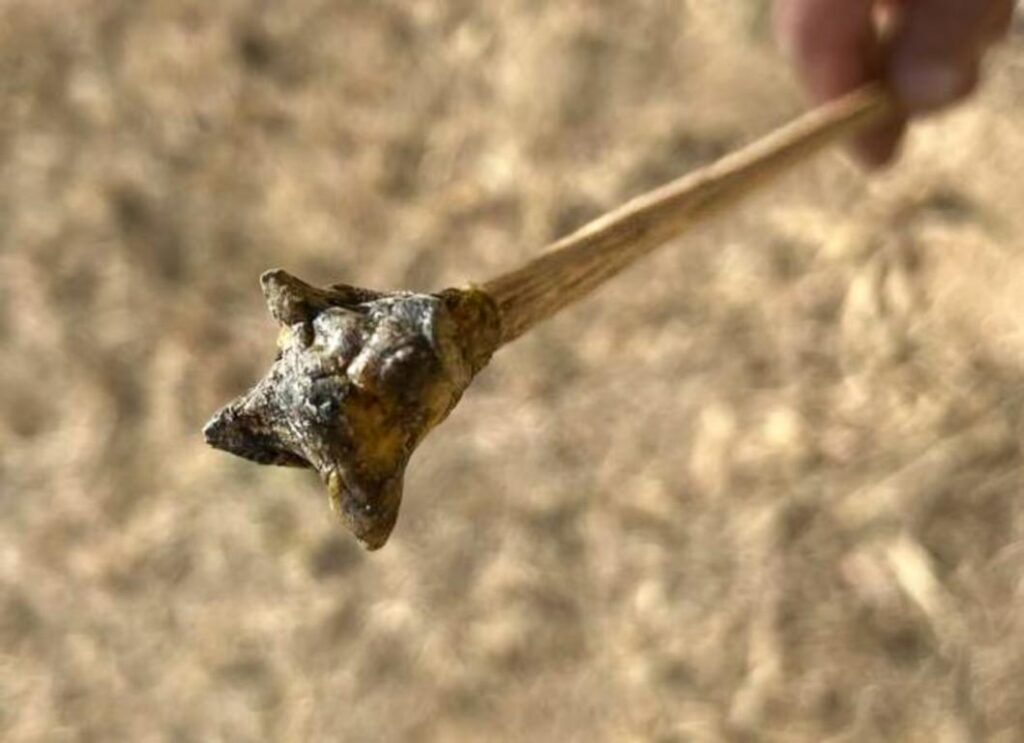
In many YouTube videos, young boys shoot passerine birds with arrows whose wooden tips are adorned with part of a corncob.
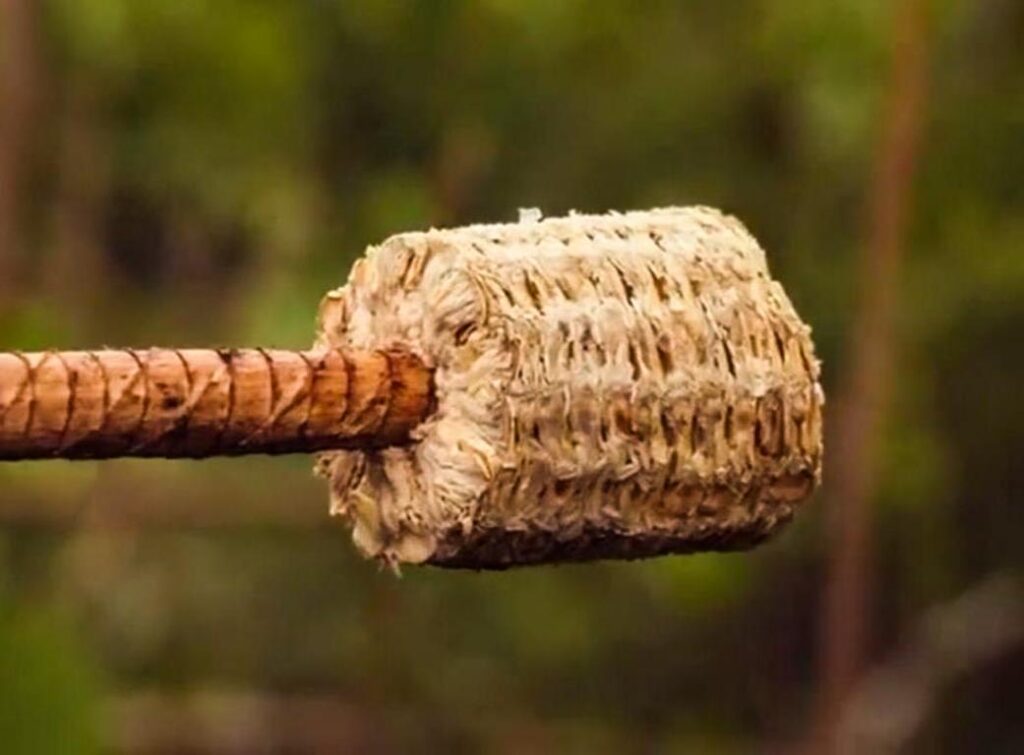
That indicates that the video’s author was filming in the Hadza tourist entertainment circus in the Yaeda North area. Genuine, remotely living Hadzabe do not have corn around them—that’s only available in agricultural villages of other tribes.
Lessons learned from types of Hadzabe arrowheads:
- There are four distinctive types of arrowheads used by the Hadza people.
- Wooden carved tips have different holding powers depending on the style variation.
- A lance-type arrowhead is used to kill mid-sized animals by shock and bleeding.
- Poisoned, barbed metal broadheads are used for bagging larger game animals.
- Blunt-nosed arrowheads will be used for shooting songbirds.
Additional information
My book ‘Hadzabe Survival Skills‘ offers more skills, knowledge, tools, and techniques for the Hadzabe people’s life in their natural environment. It is available on Amazon.com and Amazon’s regional websites.
.



